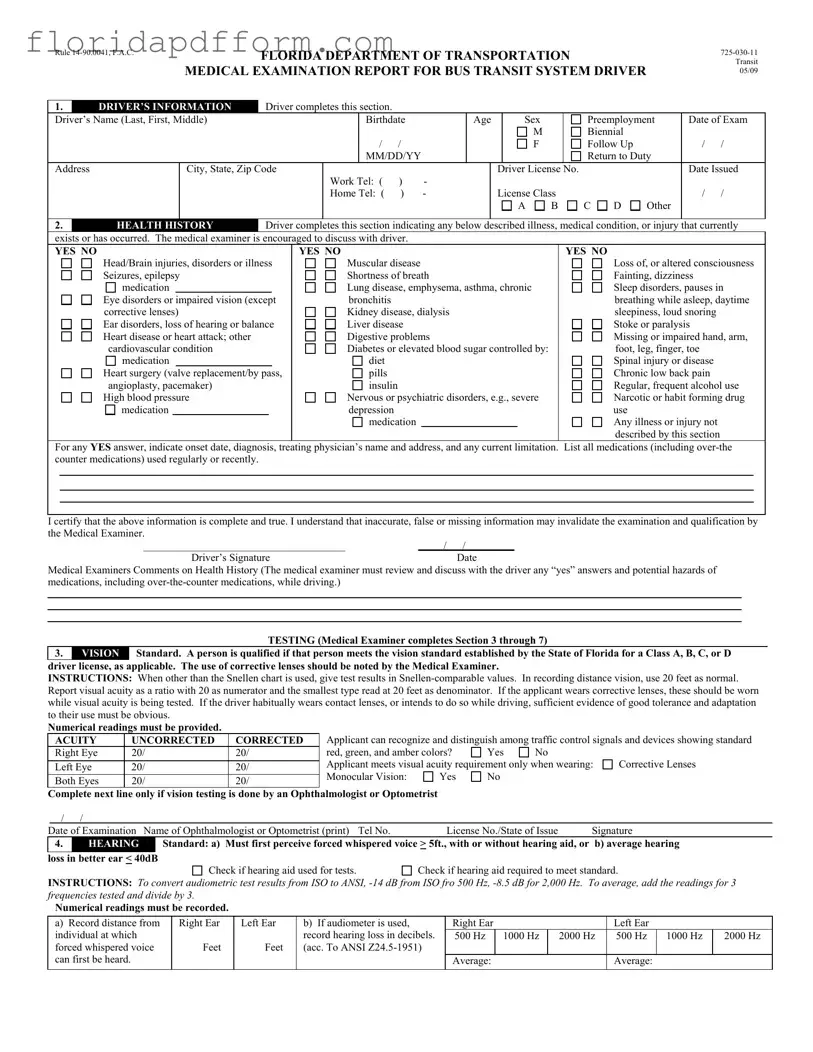Free Florida Dot Medical Form
The Florida DOT Medical Form is a critical document used to assess the physical qualifications of bus transit system drivers in Florida. This form collects essential information about the driver's health history, vision, hearing, and other medical conditions that may affect their ability to operate a bus safely. Completing this form is a vital step in ensuring that drivers meet the necessary standards to protect themselves and the public while on the road.
Launch Editor
